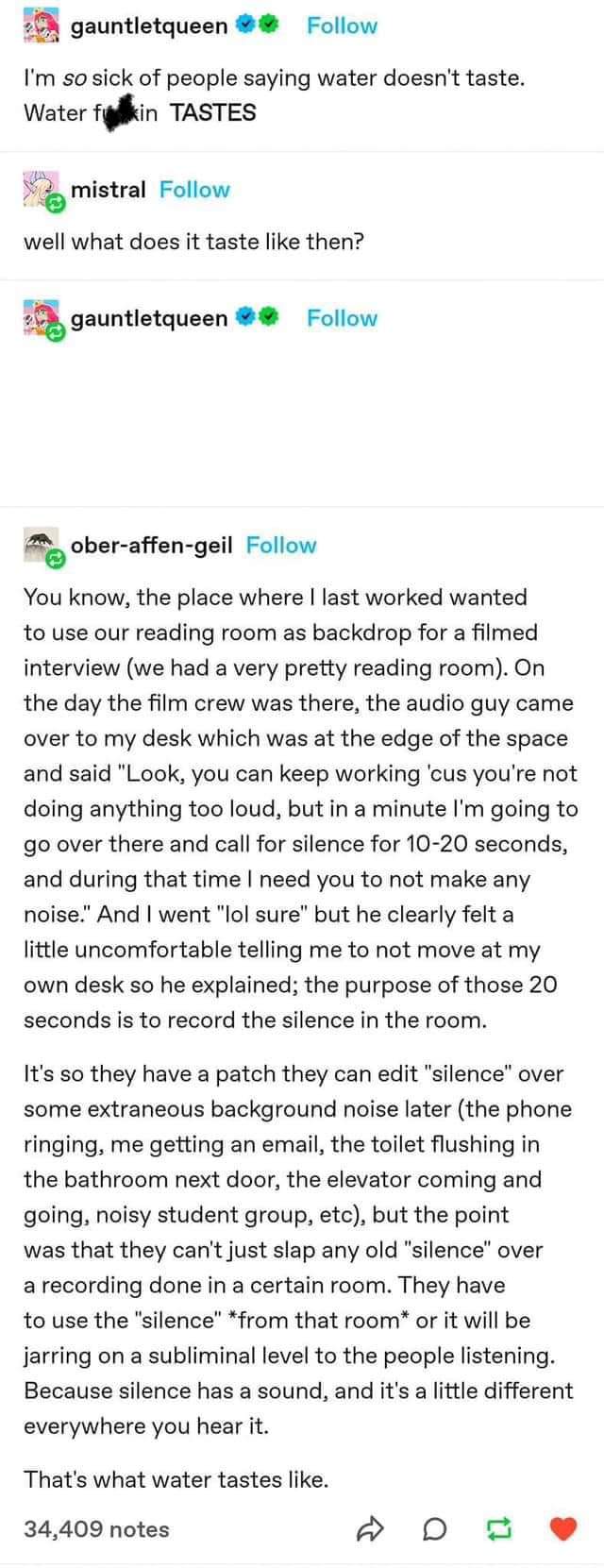this post was submitted on 18 Apr 2024
1291 points (97.9% liked)
Microblog Memes
6117 readers
2453 users here now
A place to share screenshots of Microblog posts, whether from Mastodon, tumblr, ~~Twitter~~ X, KBin, Threads or elsewhere.
Created as an evolution of White People Twitter and other tweet-capture subreddits.
Rules:
- Please put at least one word relevant to the post in the post title.
- Be nice.
- No advertising, brand promotion or guerilla marketing.
- Posters are encouraged to link to the toot or tweet etc in the description of posts.
Related communities:
founded 2 years ago
MODERATORS
you are viewing a single comment's thread
view the rest of the comments
view the rest of the comments

Im confused. How exactly is the room tone used? Is replayed in the background during something like an A roll?
It's used in a number of different situations, but its most common use is as fill during dialogue cuts: let's say you want to put two different pieces of dialogue together, but have a natural pause between them, room tone is necessary to maintain continuity.
In a study during World War II regarding comprehensibility in radio communications, radio static was less destructive to understanding an interrupted statement than no sound at all.
Oh wow. Really interesting. Thanks
Also, one of the most effective forms of jamming was a recording of multiple voices all talking over each other, it made it virtually impossible to make out who you wanted to hear.
Not a professional, but studied it in college. It's mostly to either fill in gaps or loud noises.
One thing you can often do is get a "noise print" of the room, and you can isolate someone's audio basically perfectly. From there you can create a room tone and slap it under the entire track. Now if you need to mute or something you just cut the talking track and the room noise carries over.
If you don't get a good room tone, say you want to use someone looking at the camera, but the director was talking. If you try to filter out the directors voice, it's likely going to sound weird because some of the tones overlap with the room. So you mute it and slap the room tone over and you're good. They often get too much, because room tones vary ever so slightly. If you get a tiny half second sample, unless you get very lucky you'll pick up that something is repeating or sounds weird. If you have 10-20 seconds you can loop that no problem.
Oof yeah noise reduction and frequency remover tools can be awesome or really frustrating.